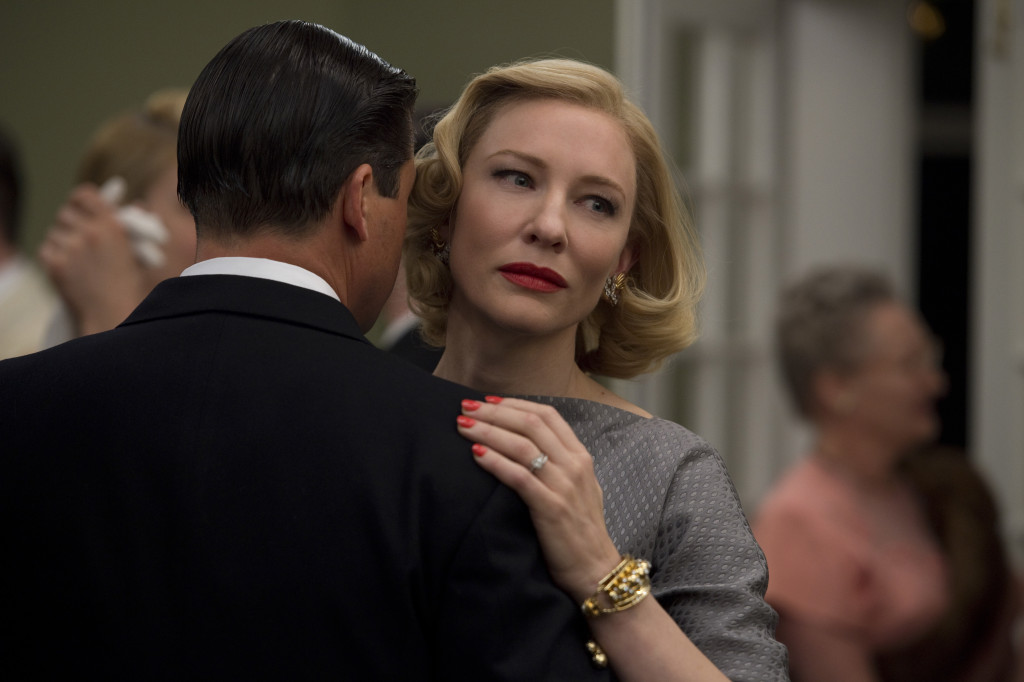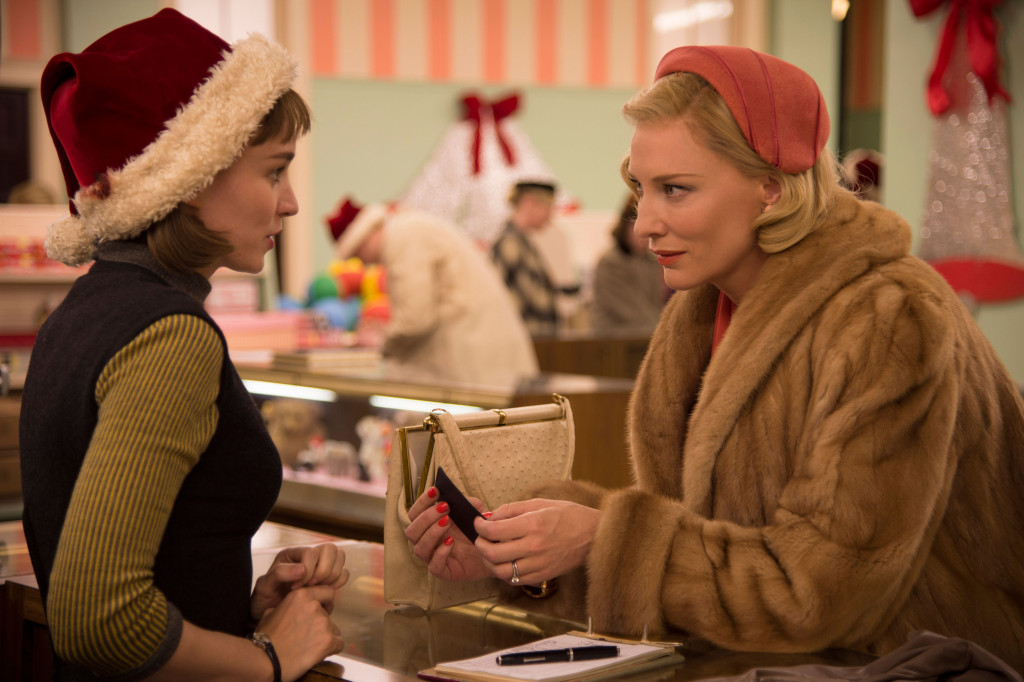If it weren’t for two great central performances, “Carol” would be hardly be worth the watch.

Carol will surely be a significant event in the gender studies departments of many universities and will inspire a great number of college papers on feminism. Apart from this, it’s barely an event in the world of cinema – honestly, it’s a tad mysterious why many critics praised it so enthusiastically and named it one of the best films of 2015.
Probably the only aspects of it which deserve a high opinion are the leading actresses Cate Blanchett and Rooney Mara and the costumes by the triple Academy Award-winning designer Sandy Powell. The film is based on the novel The Price of Salt (1952) by Patricia Highsmith (whose Strangers on a Train was filmed by Hitchcock), who published under the pseudonym Claire Morgan; she feared that the “love that dare not speak its name” content might affect her reputation. The screenplay by Phyllis Nagy seems to have reduced the book to flat characters, banal plot and insipid dialogue.
The director Todd Haynes, who has some experience in capturing female sufferings (Safe, Far From Heaven, Mildred Pierce) represents the atmosphere of Fifties New York in a charming way, but this is rather just a nice canvas on which the picture itself looks very unnatural. The cinematography by Edward Lachman, who has an Academy Award nomination for his collaboration with Haynes on Far from Heaven, is on the edge of being really well-crafted, but at the end there isn’t a single memorable shot. Lachman used Super 16 mm film, which was developed in the late-60’s single-sprocket film allowing wider aspect ratio and now giving a retro feeling. In this case it’s employed for many close-ups of eyes, mouths, hands and other anatomical parts, which, together with the artistic smoking of a thousand cigarettes, are supposed to express the tension between the characters.

The results from all the cinematographic clichés would have probably been devastating if the actresses weren’t exceptional. Still, their full potential remains unreleased, especially in the case of Cate Blanchett – this could be confirmed by re-watching her Oscar-winning Blue Jazmine, where she plays a society woman experiencing a similar degree of an existential breakdown, but gives a greater performance due to the presence of a greater director on the set (Woody Allen).
Blanchett’s Carol Aird meets Mara’s Therese Belivet in a department store, where Therese works and where Carol looks for a present for her daughter. Their eyes meet across many other faces, then Therese loses sight of Carol, but then Carol appears just in front of her, and this breathtaking sequence is in accordance with every sacred law of touchy-feely romantic dramas. Of course, the difference in their social status is underlined on their first date, when the older femme fatale Carol takes the dazed and confused Therese to a posh restaurant and orders a complicated dish and a high-class beverage while Therese doesn’t know what to do. This juxtaposition is embodying almost everything we’re going to know about these characters. Oh, yes, and the fact that Therese has an interest in photography, which automatically makes her an artist and later an employee at the New York Times.

The rest of the characters in the film are even more one-dimensional – some well-to-do good looking men who are in love with the lesbians and thus provide the basis for the dramatic conflict (Carol’s husband claims full custody of their little daughter) and a third lesbian, Carol’s ex lover Abby (Sarah Paulson), whose narrative function is to say a few words about Carol and then to drive a car. The fact that every male character is oversimplified and presented as unable to understand the complexity of the female psyche is applauded by gender scholars around the globe at this very moment.
Carol takes Therese on a road trip consisting of sleeping in a variety of motels, something like Humbert’s travels with Lolita. There’s even a gun in the story, but it makes things only more confusingly laughable, and it doesn’t even follow Chekhov’s prescriptions. Thank God they smoke cigarettes all the time, otherwise we could forget that it’s dramatical. And thank God Cate Blanchett and Roony Mara are there, without them these two hours would be far more regrettable.


